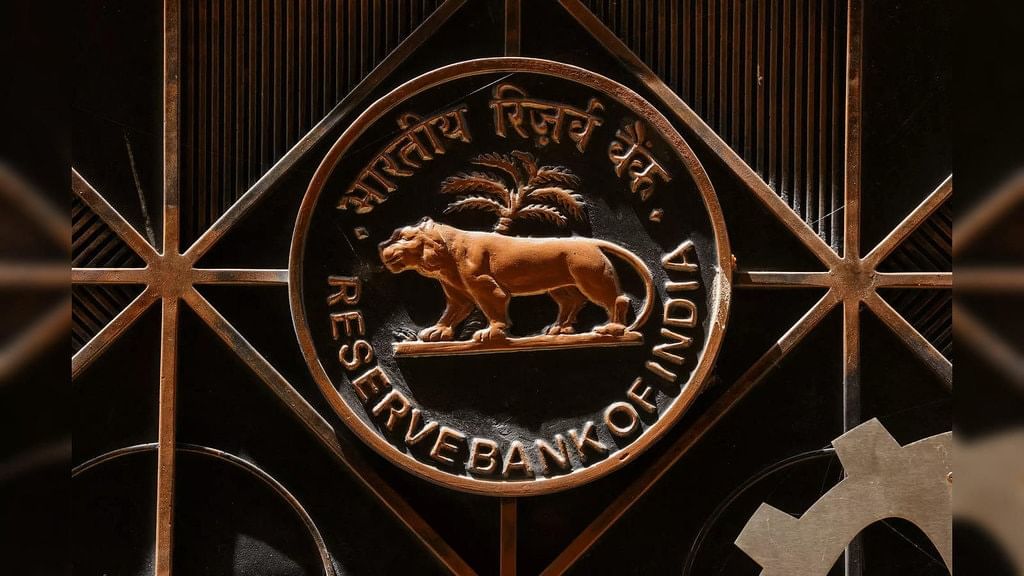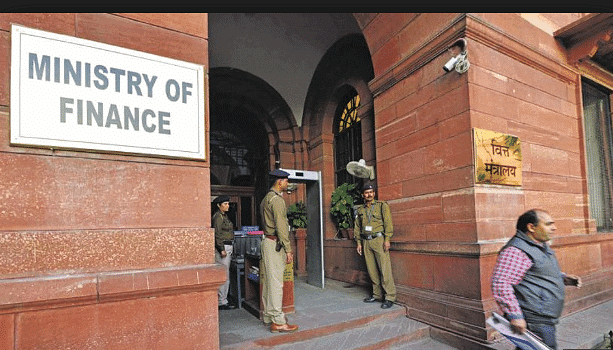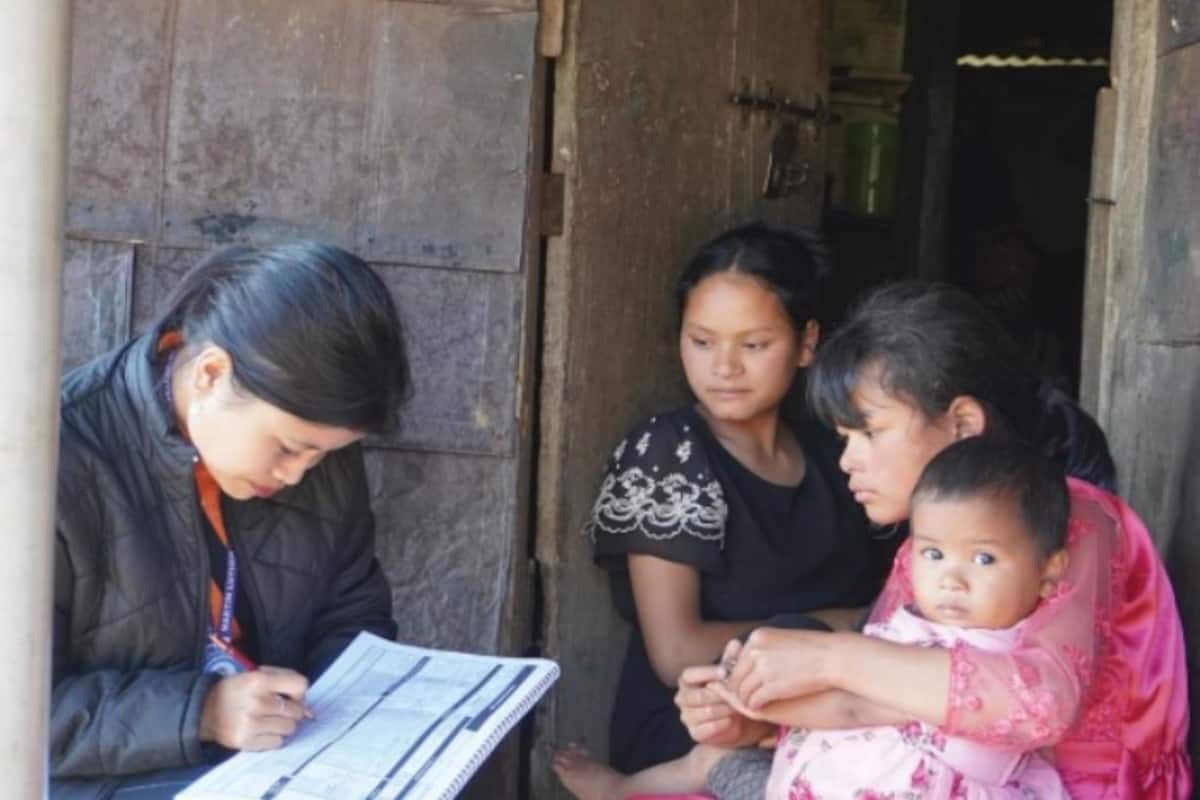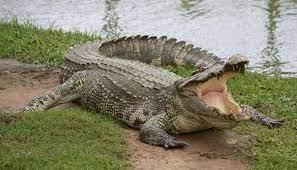Weekly Current Affairs (15th to 21st January 2024) | General Test Preparation for CUET UG - CUET Commerce PDF Download
WHO Issues Guidance on Healthcare AI Ethics
Key Healthcare Application Areas
- WHO identified five broad LMM application areas: clinical diagnosis and care, patient self-diagnosis, clerical healthcare administration, medical education via simulations and scientific R&D.
Caution Against Risks
- Despite promising use cases, LMMs pose risks like false or biased statements that could improperly guide decisions. Training data quality issues may also perpetuate disparities.
- Affordability, automation over-reliance and cyber threats due to the sensitivity of patient data managed by these algorithms are other pressing considerations.
Stakeholder Collaborations Needed
- WHO advocated collaborative governance between health system stakeholders, technology firms, civil society and patients across all stages of LMM building and rollout.
Government Regulations and Investments
- It advised governments to enact laws ensuring LMMs meet ethical duties and fund public computing infrastructure adhering to fairness principles. Assigning oversight bodies to vet healthcare AI is also recommended.
Responsible Industry Practices
- For developers, engaging diverse potential users early and intentionally designing AI systems for well-defined tasks with explainability are among the principal recommendations.
Core Ethical Principles
WHO’s 2023 AI ethics guidance highlights six foundational principles for the health sector:
- Protecting autonomy
- Promoting wellbeing/safety
- Ensuring transparency
- Fostering accountability
- Enabling inclusivity/equity
- Furthering sustainability
Global Risks Identified
- The World Economic Forum’s Global Risks Report categorized AI disinformation and media manipulation as a pressing short-term societal risk, especially for upcoming elections. Regulation is vital as 3 billion globally will soon vote.
- UN experts now warn that AI may deprive lower-income countries of productivity gains and disproportionately affect women. Proactive measures to democratize access are imperative.
EU Leads in AI Governance
- The EU recently passed an AI Act enforcing fundamental rights compliance to protect election integrity. Global policy coherence is essential to balance innovation with responsibility.
Cyber Threats
- In addition to artificial intelligence (AI), the World Economic Forum report identifies quantum computing as another potentially disruptive technology. It raises particular concerns around “harvest attacks,” where wrongdoers amass currently encrypted data to later decrypt it when more powerful quantum computers emerge that can easily break modern encryption schemes. This highlights the pressing need to upgrade security and data protections now before quantum technologies enabling such cyber attacks become available.
RBI’s State of the Economy Report
Need to Anchor Inflation Expectations
- While economic activity continues strengthening, inflation must align with the 4% target by Q2 2024 to enable sustained 7%+ GDP growth in 2024-25. Anchoring expectations will drive broad-based advancement.
Crowding in Private Investment
- Government infrastructure push has started crowding-in private capital expenditure alongside consumption. With investment complementing spending, 2023 ended strongly despite odds.
Asia to Lead Global Growth
- The report forecasts emerging economies like India to outperform the world, with Asia leading overall 2024 growth. Global trade is also rebounding from its pandemic slide but may remain below pre-COVID peaks.
Financial Sector Strengthening Required
- The analysis stresses further bolstering bank balance sheets, improving asset quality and sustaining external balance gains to secure future opportunities. Managing risks prudently will enable leveraging India’s strengths.
Harnessing Technological Dividends
- It advocates harnessing technology-led growth equitably in a calculated risk environment. India must fully capture the productivity potential of digital advances to lift millions.
Rural Recovery Still Nascent
- While urban consumption has recovered amid a strong uptick in discretionary spending, rural spending growth remains muted. Further fuel price moderation can accelerate farm mechanization and raise rural purchasing power.
Upskilling Workforce to Attract Investment
- With India aiming to expand manufacturing under Make in India for the world, implementing National Skills Qualifications Framework to upskill workforce to global standards will augment competitiveness and draw investors.
Trade Connect ePlatform
Supporting MSME Exporters
- The platform will connect Indian exporters and entrepreneurs to international trade stakeholders. This will help new exporters, especially MSMEs with limited knowledge, access key export promotion information and opportunities not easily available to them currently.
Export Resources in One Platform
- The portal is designed as a one-stop resource for everything related to exports including contact details of officials and domain experts. It will bring transparency by making previously inaccessible material open for small businesses.
About Board of Trade
- Board of Trade, which advises on trade policy, was created in September 2022 by merging the Council for Trade Development and Promotion into it. It provides the opportunity to undertake regular consultations and discussions with the industry and trade. It also advises the government on policy matters associated with the Foreign Trade Policy to boost India’s trade.
Reviewing Export Targets
- The Board discussed India’s $2 trillion export target by 2030, new Foreign Trade Policy priorities and strategies to take export growth forward. Export promotion council EEPC India suggested connectivity of waterways and ports plus incentives to boost exports.
Narrowing Trade Deficit
- India’s December trade deficit narrowed almost 4% over November as exports rose while imports moderated. Services exports also exceeded imports, indicating positive momentum.
Measures Taken to Boost Exports
- Logistics Development: Efficient logistics connectivity via ports, waterways and airports along with seamless last-mile delivery are enabling businesses to access global markets faster. Upgrading logistics and transport infrastructure across states can give Indian exports a competitive edge.
- Lowering Export Costs: The new Foreign Trade Policy and resultant measures are lowering exporters’ costs through incentives like tax and duty remissions and input tax credits. This makes India’s exports price competitive worldwide.
- Increasing Export Base: Platforms like Trade Connect that provide export knowledge access along with guidance to small enterprises can grow India’s export base exponentially. Onboarding more MSMEs onto global e-marketplaces through such channels will be key.
Draft Indian Stamp Bill, 2023
Updating Archaic Policies
- The Indian Stamp Act 1899 is an old fiscal law governing taxes levied via stamps on transaction instruments. It predates the Constitution. Stamp duties are collected by states per the Constitution despite imposition by the Central Government.
- The 1899 Act has been amended periodically to enable a more modern stamp duty system. But many original provisions have become redundant or inoperative. There is a clear need to re-orient the outdated legislation for present conditions.
What the Stamp Act Entails
- The Indian Stamp Act imposes levies in the form of stamps on legal agreements and documents that record financial transactions. These include property sale agreements, lease contracts, power of attorney papers etc. Rates differ based on the document type.
Revenue Collection for States
- While the Central Government defines stamp duty rates, revenues accrue to State Governments where the duties are paid. It represents an important source of tax collection empowering states to fund welfare programs and public infrastructure projects.
Plugging Duty Evasion
- The stamp law aims to prevent tax evasion by making documentation of transactions mandatory for legal validity and enforceability. Lack of stamps leads to document inadmissibility in courts. This compels stamping.
Key Reasons for New Stamp Law
- The proposed Indian Stamp Bill 2023 will align the stamp duty regime to current realities and objectives. This necessitates repealing the 1899 Stamp Act in its entirety and enacting fresh legislation for the contemporary context.
Proposed Changes to Boost Ease
- Proposed legislative changes in the new Indian Stamp Bill will likely ease payment modes and access. Introduction of consolidated duty slabs across states could provide uniformity. Digital property registration may also facilitate convenience.
Curbing Duty Avoidance Tactics
- The Bill may curb tactics used to avoid duty like undervaluing property sales. It could mandate links between sale prices and circle rates to prevent under-reporting. Strong anti-evasion measures will safeguard revenue.
Bolstering the Digital Economy
An updated all-digital stamp duty system will propel India’s digital economy. Electronic documentation and registration via a single portal or platform will enhance transparency and efficiency.
2023 ASER Survey – Key Findings
Measuring Four Areas
- The survey aimed to measure four broad areas – activity, aspiration, general awareness, and ability. It built on a 2017 survey of the same age group that examined reading and arithmetic skills. New components mapped readiness for everyday tasks and digital skills like using a cellphone.
Multiple Roles but Limited Options
- Around 30% of respondents already work, often for parents, but don’t aspire to continue this work when older. This highlights children’s multiple roles not fully captured by the education or job market.
Basic Skills Still Lacking
- About 25% still cannot fluently read a Standard II level text in their regional language. Over half struggle with division problems typically mastered by Standard III-IV. Girls outperform boys in reading while boys do better in arithmetic and English. There are still opportunities to help 14-18 year olds develop critical basic skills.
Widespread Digital Access, Surface-Level Use
- Over 90% of respondents can use a smartphone, similar across genders. But fewer girls personally own devices. Most use phones for entertainment and social media more than education. As digital access increases, schools could help students build stronger digital skills.
Schools Still Have a Role
- With 85% enrollment, schools can reach students through both in-person and remote learning. They remain an important convening and sharing platform, even if online options expand.
Job Market and Education Misalignment
- Most older respondents study humanities, reflecting local availability. Students interested in science may lack those options nearby. The New Education Policy allows more flexibility across streams. Remote learning could help students access subjects unavailable locally.
9th Pakke Paga Hornbill Festival
Hornbill Species in Focus
- The reserve harbors four hornbill species – Oriental Pied, Great Indian, Rufous-necked and the endangered Wreathed Hornbill. The week-long event generates awareness on preserving these iconic birds.
Linking Forest, Birds and People
- PPHF also spotlights the role of indigenous Nyishi tribes in protecting hornbills after having earlier hunted them. It forges connections between forests, wildlife and local communities. The Nyishi is the largest tribal group in Arunachal Pradesh. The Nyishi tribe used to hunt hornbills traditionally and utilized their distinctive bills to create ethnic headgear. However, over time the Nyishi transformed into champions protecting the same hornbills that were once targeted.
Festival Origins and Goal
- The first PPHF was organized in 2015 with the goal to recognize Nyishi conservation efforts. Beyond promoting hornbill conservation, other key goals of launching the Hornbill Festival were generating alternate livelihood streams for locals and raising nationwide awareness regarding the unique biodiversity found in Pakke Tiger Reserve and adjoining areas.
“Let Our Hornbills Remain”
This year’s theme stresses the critical need to safeguard hornbills for balancing the region’s ecosystems and culture. The onset of deforestation and climate threats lend urgency.
Activities at Upcoming Edition
Key activities lined up include:
- Bird watching tours
- Literary competitions
- Panel discussions
- Tribal music/dance performances
- River walks
- Local cuisine
The activities provide unique glimpses into the area’s natural and ethnic heritage while raising ecological awareness.
Rising Acidity Threatens Antarctic Shelf Ecosystems
Coastal Areas Face Higher Risks
- Compared to the open ocean, the researchers highlight that underwater continental shelf areas near coastlines face disproportionately higher acidification threats. This raises worries for Antarctic MPAs aimed at safeguarding unique polar marine ecosystems.
Ocean Acidification Explained
- While oceans absorb atmospheric CO2 to help mitigate climate change, the uptake causes chemical changes termed ocean acidification – raising acidity and affecting marine habitats.
Study Findings and Projections
- Under moderate to very high emissions scenarios, Antarctic MPA ecosystems could undergo significant to severe acidification by 2100.
- Widespread aragonite undersaturation is expected at varying ocean depths in MPAs. This mineral is critical for organisms like pteropods to form shells.
- Surface ocean pH could decline up to 0.36 units in MPAs by 2100 based on high projections – representing a 100% increase in acidity.
Recommendations Proposed
- Given acidification risks, the researchers advocate strong climate mitigation efforts coupled with conservation strategies like expanding Antarctic MPAs to curb added ecosystem pressures from human activities.
Existing and Proposed Antarctic MPAs
- Several MPAs currently protect sections of Antarctica’s continental shelf and marine habitats including the Ross Sea and South Orkney Islands.
- With 3 additional proposed MPAs, nearly 60% of Antarctic shelf waters could come under protected status. India has also extended support towards establishing 2 more Antarctic MPAs.
Marginal Rise in Saltwater Crocodiles of Odisha’s Bhitarkanika National Park
Bhitarkanika National Park
- Bhitarkanika National Park is a 145 sq km protected area located in the Kendrapara district of Odisha, India. It was designated a national park in September 1998 and subsequently accorded Ramsar Site status in August 2002, becoming Odisha’s second wetland after Chilika Lake to receive this recognition.
- The national park is surrounded by the larger 672 sq km Bhitarkanika Wildlife Sanctuary. It lies alongside the Gahirmatha Beach and Marine Sanctuary, which separates the park’s mangrove swamps and tidal regions from the Bay of Bengal. The park ecosystem is nourished by the Brahmani, Baitarani, Dhamra and Pathsala rivers and is noted for its extensive mangrove cover, representing India’s second largest mangrove forest after the Sundarbans in West Bengal. Both parks, along with Andaman and Nicobar Islands, form the three prime habitats of these giant reptiles in the country.
Annual Crocodile Census Conducted
- The crocodile census is held every year in winter when around 50% of mudflats get exposed. In 2024, 22 teams surveyed numerous rivers, creeks and channels over three days aided by forest staff and herpetologists.
All Age Groups Show Marginal Growth
- Experts spotted increased counts across hatchlings, yearlings, juveniles, sub-adults and adults compared to 2023, indicating marginal population growth overall. But only adults and sub-adults are potentially dangerous to humans.
Rising Human-Crocodile Conflict a Concern
- Conflicts have risen lately, with six killed in crocodile attacks near Bhitarkanika between June-August 2022. Experts note crocodiles now venture over 70-100 kms from the park into inhabited areas. Capturing and returning them is challenging.
- The gradual expansion of saltwater giant’s range around human habitations poses an increasing risk. Awareness and preventing fatal encounters is crucial for coexistence
‘One Vehicle One FASTag’ Initiative
Seeks to Curb FASTag Misuse
- The initiative looks to discourage practices like using one FASTag for multiple vehicles or linking multiple tags to one vehicle. These undermine the toll collection system.
Push for Updated KYC Compliance
- NHAI is also urging FASTag users to complete Know Your Customer (KYC) formalities for their latest tag as per RBI norms. Non-compliant tags will get blacklisted after 31st January, 2024. To avoid problems, users must update KYC and switch to ‘One Vehicle, One FASTag’.
Documents Required for KYC Update
As per RBI rules, the documents required for FASTag KYC are:
- ID/Address Proof: Passport, Voter ID, Aadhaar, Driving License, PAN Card
- Vehicle Registration Certificate
- Passport Size Photo of Vehicle Owner
How to Update KYC Details
- Users can update KYC details online via the IHMCL FASTag portal using above documents. Offline update is also possible by submitting forms at the bank branch that issued the FASTag.
Help Available
- For any FASTag-related queries, NHAI representatives can be reached on the toll-free helpline 1033. FASTags can also be bought at most toll plazas, and need minimum recharge of Rs. 100 (max Rs. 1 Lakh for full KYC).
FASTag Revolutionized Toll Collection
- With 98% penetration and over 8 crore users, FASTag has transformed Indian toll collection efficiency. The ‘One Vehicle, One FASTag’ move will boost operations and ensure smooth highway journeys.
Operation Sarvashakti Launched
Background
- Over the past few years, 7 soldiers have been killed in Kashmir ambushes and 20 more were killed in attacks in the Rajouri-Poonch belt. Authorities suspect the terrorists responsible for the 2023 ambushes on security forces in Rajouri-Poonch are concealing themselves in these remote areas. Sources among the security forces indicate that most of the remaining terrorists currently active in Jammu & Kashmir are of foreign origin.
About Pir Panjal Range
- The Pir Panjal Range constitutes a mountain chain in the Lower Himalayan region within the Western Himalayas of the northern Indian subcontinent. Extending southeast to northwest between the Beas and Neelam/Kishanganga rivers, it spans the Indian territories of Himachal Pradesh and disputed Jammu and Kashmir, with its northwestern end reaching into Pakistan.
- Serving as the largest range in the Lesser Himalayas, Pir Panjal exhibits a gradual elevation towards the Dhauladhar and Pir Panjal ranges. Adjacent to the Sutlej River, it separates from the Himalayas, forming a division between the Beas and Ravi rivers on one side and the Chenab on the other. Further west, the Pir Panjal range acts as a barrier, dividing the Kashmir Valley from the hills of the Jammu region.
Multi-Agency Effort
- Troops from 15 Corps and 16 Corps are operating together. Other agencies and paramilitary forces are also participating. The operation aims to eliminate Pakistan-sponsored terrorists.
Intelligence-Based Actions
- According to sources, intelligence inputs at all levels are being collected and acted upon. Additional reserve troops have moved into the Rajouri-Poonch area.
Patterned After 2003 Operation
- Sarvashakti is modeled on 2003’s Operation Sarpvinash in the region south of Pir Panjal. Operation Sarpvinash was implemented by the Indian Army and the Rashtriya Rifles. That three-month operation killed nearly 100 terrorists. It brought peace until 2017-2018.
Supreme Court Questions Govt on GM Crops
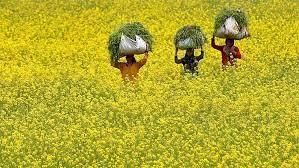
On January 11, the Supreme Court asked why the government’s Genetic Engineering Appraisal Committee (GEAC) did not consider expert reports on genetically modified (GM) crops. The GEAC approves the release of GM organisms.
SC Hearing Pleas Against GMOs
- The court is hearing pleas for a ban on releasing GM organisms until more research is done. The petitions want a transparent public process involving independent expert agencies.
Govt Seeks To Allow GM Mustard
- The government now wants to withdraw its earlier promise not to push GM mustard cultivation. In November 2022, the court had ordered status quo on a GEAC nod for commercial GM mustard over risk concerns.
What is GM Mustard Hybrid DMH-11?
- DMH-11 is a genetically modified mustard hybrid developed at Delhi University. It combines Indian and East European mustard types using lab techniques. This helps make a more productive hybrid for higher yields.
GM Method Used for Hybridisation
- Normal mustard breeding is tricky but GM methods enabled hybridization here. Scientists added genes from soil bacteria to parent plant lines – one for sterile pollen, one to restore fertility later. This allowed efficient cross-breeding.
Higher Yields Claimed
- DMH-11 showed 28% higher yields than a popular Indian variety in contained trials. The GEAC cleared it in 2022 for commercial cultivation after seed production. It also allowed new hybrids using the GM parental lines.
Addressing Opposition Concerns
- There were concerns over DMH-11 like: risk to bees. But expert reports found little adverse effect likely. The GEAC still asked for more studies on bees when DMH-11 is released.
Motivation to Cut Edible Oil Imports
- India depends heavily on edible oil imports. Nod to home-grown higher yielding GM mustard could reduce foreign exchange spending running into billions of dollars annually.
|
164 videos|800 docs|1160 tests
|



